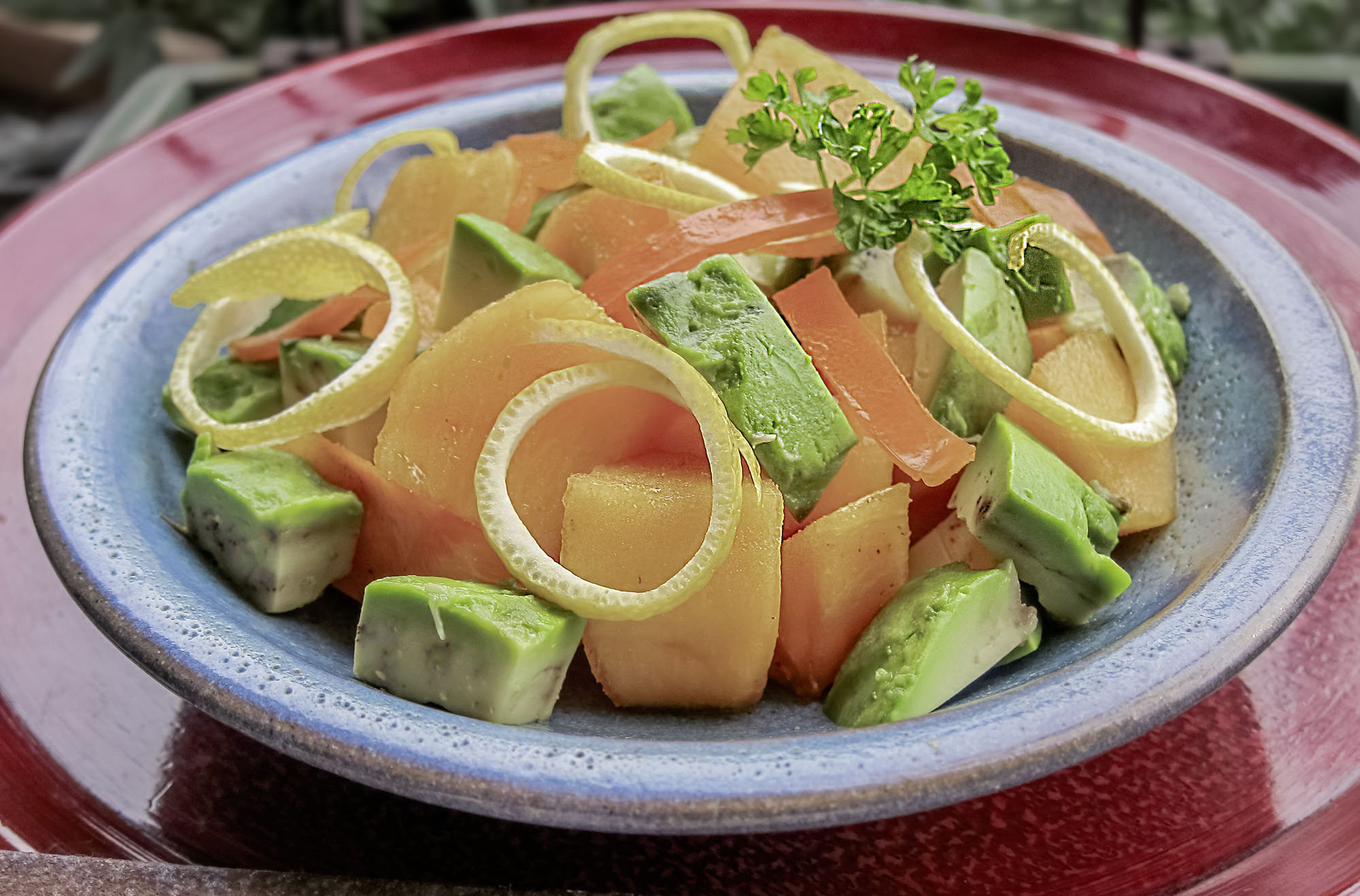The persimmon (kaki) tree is one of the best-loved plants in Japan. The leaves are dried and made into a tea that's rich in vitamin C, various B vitamins and potassium, as well as used as a wrapper for a traditional type of sushi, the kaki-no-ha variety. The slow-growing, hard lumber is used to make furniture and decorative items, and a brown liquid extracted from unripe fruit called kakishibu is used as a wood stain and sealant, as well as for medicinal purposes. But above all, the bright orange fruits are a most welcome sight at this time of year.
Persimmon fruits are packed with vitamins A and C, potassium and fiber, and have even been used as a hangover cure. One of the best-known haiku is about eating persimmons — Shiki Masaoka's "I bite into a persimmon / ringing bells / Horyu-ji (Kaki kueba / kane ga naru naru / Hōryū-ji), juxtaposing the sensation of biting into a ripe persimmon with the solemn sound of the bells at the famous Buddhist temple in Nara in the autumn.
Persimmon fruit have been eaten in Japan for thousands of years. The 1,000 or so persimmon varieties known to exist today are divided into three types: sweet (amagaki), tannic (shibugaki), and not quite sweet (fukanzen amagaki). Of these, the sweet type, which can be eaten as is even when crisp and not quite fully ripe, is the most popular. There are only about 20 varieties of amagaki, and the most popular one, fuyū, accounts for a quarter of Japan's entire persimmon production. Another widely available amagaki variety is the jirō.

















With your current subscription plan you can comment on stories. However, before writing your first comment, please create a display name in the Profile section of your subscriber account page.